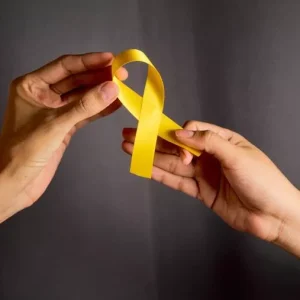The Life in Mind team attended the keynote address of Children and Adolescents as part of the support for the IASP 31st World Congress 2021. The session, sponsored by the Black Dog Institute, involved presentations from Professor Margaret Nahkid Chatoor, Professor Helen Milroy and Professor Ella Arensman.
Professor Margaret Nahkid Chatoor, a psychologist and Assistant Professor at the University of Trinidad and Tobago, introduced the session by speaking to the effects in which alienation from school increases the risks of mental illness among children and adolescents during the COVID-19 pandemic. Key takeaways included:
- School closures have exacerbated inequities, disproportionately affecting already disadvantaged students. UNESCO consequences of school closures describes these resulting adverse effects in further detail.
- Isolation from school and social activities has led to the loss of connection from peer groups and reduced support. Given the nature of critical decisions both personally and professionally for late adolescents, poor social connection has contributed to their stress and sense of isolation.
- Implications to consider for policy and practice include increasing online learning in more social and effective ways, exploring mechanisms to provide a sense of belonging within the family, providing accurate information about the risks of social media and addressing anxiety and stress through digital interventions.
The second speaker, Professor Helen Milroy OAM, from the Division of Psychiatry, Faculty of Health and Medical Sciences, UWA, discussed children’s mental health in relation to developmental trauma and suicidality, particularly in its relationship between early brain development and effects of adverse experiences. She tailored her talk to critical questions surrounding the ignorance, inaction and lack of focus in the health system’s prevention for children’s mental health.
Every year there are substantial child protection issues across the nation. According to the Australian Institute Australia’s Welfare 2019 report, in 2018-19 about 170,000 children aged 0-17 received child protection services. Professor Milroy highlighted such prevalence including children and adolescent’s exposure to sexual, physical and substance abuse as additional vulnerabilities to self-harm and suicide.
Linking adverse experiences, Professor Milroy emphasised the need to nurture children’s foundations for a stronger future by creating the right story, namely one that looked like “Once upon a time Australia became the safest place to bring up children”. A strong focus in advocacy directed to understanding context, giving attention to cultural lenses, delivering responsive service systems, ensuring care is trauma informed and fostering a compassionate society was noted.
The final speaker, Professor Ella Arensman, Professor of Public Health at the University College Cork, spoke about the associated risks factors and evidence based interventions in self-harm and suicide in young people.
The key takeaways Professor Arensman shared relating to the specific challenges associated with self-harm and suicide in young people included:
- Self-harm is more frequently observed among children and adolescents at younger ages (e.g. in Ireland, UK, USA, Australia, Japan).
- Online series and social media can be accessed frequently which increases ‘marathon’ or ‘binge watching’ viewing patterns.
- Further attention should be given to evidence-based mental health promotion and programs addressing positive coping skills at a younger age.
- Barriers in accessing mental health services for children and adolescents at risk of self-harm and suicide need to be improved.
- Greater insight is required into the potential impact of social media platforms on risk of self-harm and suicide for young people.
The session concluded by acknowledging that amongst the research shared, which points to the need for greater early intervention, significant research into neuroplasticity since 2000 also tells us that there is hope throughout life.
Credit – Life In Mind, (lifeinmind.org.au)
See the original article here.





